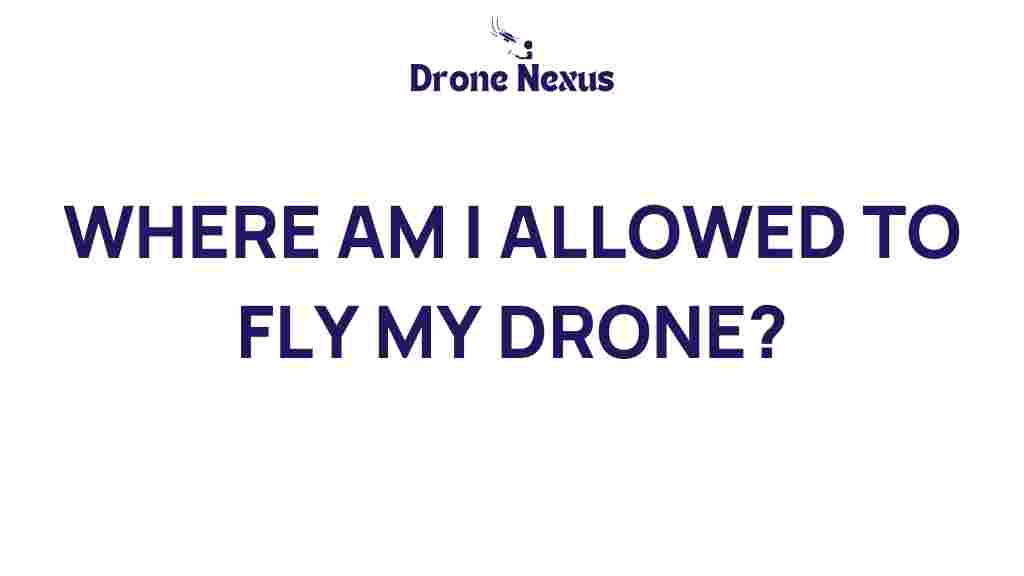Drone Regulations: Understanding Where You Can Fly
As the popularity of drones continues to soar, so does the need for understanding drone regulations. These regulations are essential for ensuring safe and responsible flying. Whether you’re a hobbyist pilot or a professional drone operator, knowing where you can legally fly your drone is vital to avoid penalties and ensure public safety. In this guide, we will explore the ins and outs of drone regulations, providing you with a comprehensive understanding of where you can fly your drone.
Understanding Drone Regulations
Drone regulations vary significantly depending on your location, the type of drone you are flying, and its intended use. Here are some key factors to consider:
- Local Laws: Each country, state, and even city can have its own laws regarding drone use.
- Federal Regulations: In many countries, national aviation authorities set rules that apply to all drone pilots.
- Airspace Classification: Different types of airspace have specific regulations governing drone flights.
The Role of the FAA in the United States
In the United States, the Federal Aviation Administration (FAA) is responsible for regulating drone operations. The FAA has established several rules that drone pilots must follow:
- Drones must be registered if they weigh more than 0.55 pounds (250 grams).
- Drone operators must adhere to a maximum altitude of 400 feet.
- Flights must be conducted within the visual line of sight.
- Night flying is only allowed if the operator has completed additional training.
Types of Airspace
Understanding the different types of airspace is crucial for complying with drone regulations. Here’s a breakdown:
- Class A: Generally not accessible for drone operations.
- Class B: Requires permission from air traffic control.
- Class C: Permission is usually required, but some areas may allow recreational flying.
- Class D: Similar to Class C, but typically has more restrictions.
- Class E: Generally allows drone operations, but with specific altitude limits.
- Class G: Uncontrolled airspace, where most recreational flying occurs.
Step-by-Step Process for Checking Drone Regulations
Before flying your drone, it’s essential to follow a systematic approach to ensure compliance with regulations:
1. Research Local Laws
Start by checking your local laws regarding drone operations. This can be done by:
- Visiting government websites for updates on drone regulations.
- Contacting local aviation authorities.
- Joining local drone clubs or forums for insights from experienced pilots.
2. Understand Federal Regulations
Familiarize yourself with the FAA regulations if you’re in the U.S. You can find detailed information on the FAA’s official website.
3. Check Airspace Classification
Use online tools and apps designed for drone pilots to check the airspace classification where you plan to fly. Some popular apps include:
- B4UFLY
- Airmap
- DroneBuddy
4. Obtain Necessary Permissions
If you plan to fly in controlled airspace or for commercial purposes, ensure you obtain the necessary permissions. This often involves:
- Applying for a Part 107 Certificate for commercial operations.
- Requesting authorization from air traffic control for specific flights.
5. Respect Privacy and Property Rights
Always be mindful of privacy concerns and property rights when flying your drone. Avoid flying over private property without permission and respect people’s privacy.
Troubleshooting Tips for Navigating Drone Regulations
Even with thorough research, you may encounter challenges in understanding or adhering to drone regulations. Here are some troubleshooting tips:
1. Stay Updated
Drone regulations are constantly evolving. To stay informed:
- Subscribe to aviation newsletters.
- Follow relevant social media accounts for updates.
- Attend drone events and workshops.
2. Engage with the Community
Networking with other drone enthusiasts can provide valuable insights. Consider joining:
- Online forums like DroneTrest
- Local flying clubs.
- Social media groups dedicated to drone flying.
3. Consult a Legal Expert
If you’re unsure about specific regulations, consulting a legal expert specializing in aviation law can provide clarity and prevent potential issues.
Conclusion
Flying a drone can be an exhilarating experience, but it comes with the responsibility of adhering to drone regulations. By understanding local laws, federal guidelines, and airspace classifications, you can navigate the skies safely and legally. Remember to stay informed, engage with the drone community, and consult experts when needed. With proper preparation and knowledge, you can enjoy your drone flying experience while respecting the regulations in place. Happy flying!
This article is in the category Safety and created by DroneNexus Team
